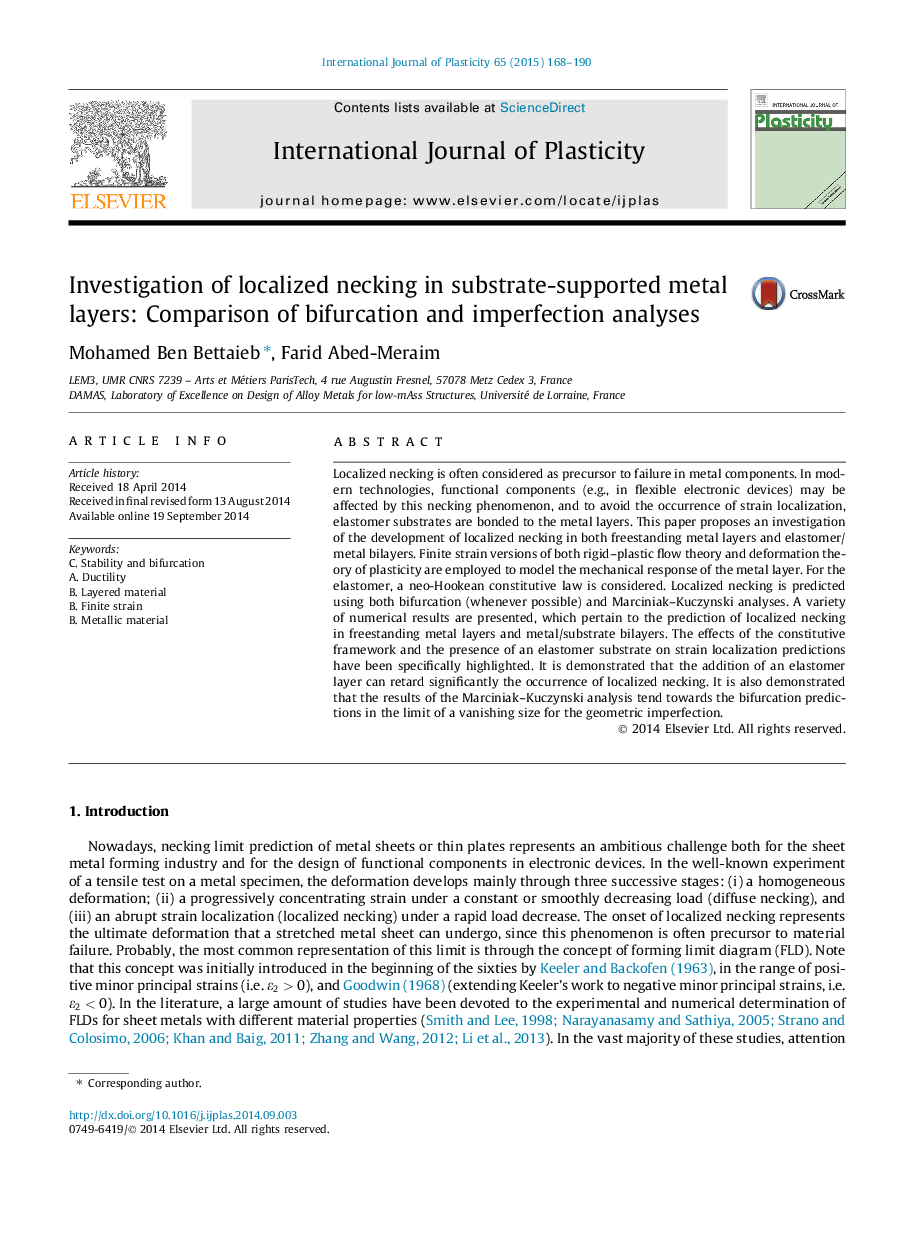| Article ID | Journal | Published Year | Pages | File Type |
|---|---|---|---|---|
| 786114 | International Journal of Plasticity | 2015 | 23 Pages |
•Efficient numerical tools are developed to predict localized necking in elastomer/metal bilayers.•The predictions are based on two necking limit criteria and two constitutive frameworks.•The ductility of freestanding metal layers is compared to that of substrate-supported metal layers.•The impact of the behavior of the metal layer on the ductility of the bilayer is investigated.•The combined effect of initial imperfection and elastomer relative thickness is analyzed.
Localized necking is often considered as precursor to failure in metal components. In modern technologies, functional components (e.g., in flexible electronic devices) may be affected by this necking phenomenon, and to avoid the occurrence of strain localization, elastomer substrates are bonded to the metal layers. This paper proposes an investigation of the development of localized necking in both freestanding metal layers and elastomer/metal bilayers. Finite strain versions of both rigid–plastic flow theory and deformation theory of plasticity are employed to model the mechanical response of the metal layer. For the elastomer, a neo-Hookean constitutive law is considered. Localized necking is predicted using both bifurcation (whenever possible) and Marciniak–Kuczynski analyses. A variety of numerical results are presented, which pertain to the prediction of localized necking in freestanding metal layers and metal/substrate bilayers. The effects of the constitutive framework and the presence of an elastomer substrate on strain localization predictions have been specifically highlighted. It is demonstrated that the addition of an elastomer layer can retard significantly the occurrence of localized necking. It is also demonstrated that the results of the Marciniak–Kuczynski analysis tend towards the bifurcation predictions in the limit of a vanishing size for the geometric imperfection.
